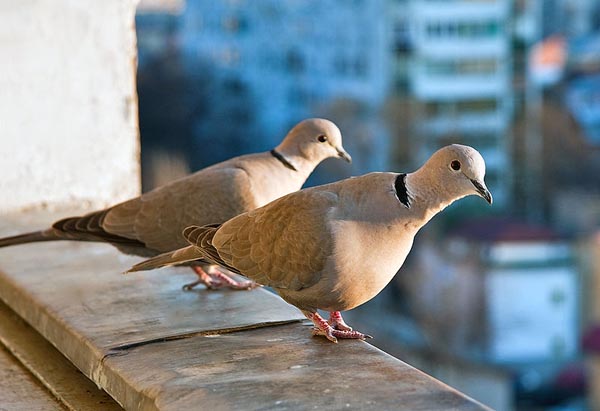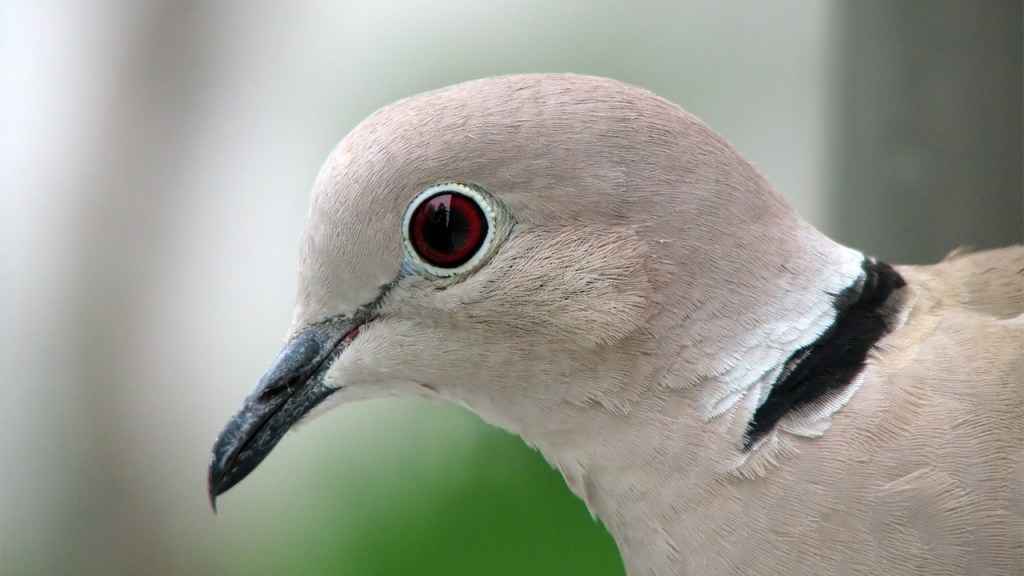The Great Backyard Bird Count (GBBC) — one of the largest citizen science initiatives in the world – annually documents a wide variety of bird population trends.
To my mind, one of the most interesting has been the dramatic spread of the non-native Eurasian collared dove across North America.
The GBBC asks citizen birders to watch an area for at least twenty minutes sometime during a four-day period in mid-February (this year’s count concluded yesterday), and record the birds they see.
Just ten years ago, seeing a Eurasian collared dove would have been a novelty. No more: the doves are now commonly reported by birders in most of the United States.
GBBC data tell the story of this rapid spread.
In the 1970s, the Eurasian collared dove was introduced to the Bahamas. By the early 1980s, the non-native birds made their way to South Florida, where they established populations. Then they began spreading north and west.
Their range appears to have expanded slowly at first. A look at GBBC reports from 1998 show a lot of sightings in Florida, with some birds reported in Texas, Alabama and Arkansas.
By 2001, the doves reached California.
Last year’s bird count results showed the Eurasian collared dove had colonized much of the country. It has not (yet) been reported in New England, but it has reached as far north as Alaska.
The GBBC’s video map dramatically illustrates this expansion.
In my state of Idaho, the doves were first recorded in 2005 by two backyard birders. In subsequent years, the bird was commonly reported in Idaho’s eastern corners. Last year, 132 GBBC participants reported 719 doves throughout the state.
I saw my first Eurasian collared dove in our backyard in 2008 – a banded bird that may have been an escaped pet. Last year, I began seeing the doves hanging around our neighborhood. This year was the first that I noted the species during my own participation in the Great Backyard Bird Count.
What’s going on here? Should conservationists be concerned about this spread?
Unlike some dove species, Eurasian collared doves aren’t migratory. However, they do readily expand into new suitable habitat. In fact, in their native Asia, Eurasian collared doves have been rapidly expanding their range as well – colonizing new countries every year.
The dove is one of those species that adapts well to humanity. The trees, power lines and bird feeders of suburbia provide perfect habitat. The Eurasian collared dove is almost always seen near homes and farms, not unbroken forest or prairie.
Research indicates it is not adversely affecting native mourning doves or other birds. It may simply be filling a new habitat niche created by suburban habitat. But it is still early in the spread.
Could Eurasian collared doves become an invasive threat? That remains to be seen.
Citizen science projects like the GBBC and another citizen initiative, Project FeederWatch, will help scientists continue to track the spread and impacts of the species. It will be interesting to learn what this year’s count found about Eurasian collared doves. If past years are any indication, their populations will likely have grown and spread into new areas of the country.
Have you seen Eurasian collared doves in your area? Have you noted other trends during your backyard bird counts? Let us know what you’re seeing!





I live in Pueblo West Colorado and they are everywhere and I have one nesting right outside my bedroom window
I was in Van Nuys, CA, today on an errand and heard an unusual bird call. (At least one I had never heard the before!) I looked up and saw one of these pretty doves in a tree. When I returned home, I looked up “ringed neck doves in California” and came upon your blog! Thank you!
We have a pair on our 40 acre citrus ranch in rial Sanger CA. First time we have seen them. We couldn’t figure out why our dove sounded so odd.
Thursday 25.04.19
North West England UK
Good Evening all from UK.
This morning I went into my first floor bedroom to open the window and noticed a white egg in my window box. I didn’t open window . Half hr later I went back upstairs to find a bird sat were the egg was.
Now I’m not up on birds but I did realise ‘Incubation’ was taking place. Over the next hour I’ve videoed the comings & goings of what I now believe to be ‘both parent’s’.
Showing the vids to my daughter she has told me it’s the Eurasian collared dove.
Now I will have to wait another 2 wks or so to plant up my window boxes lol.
It’s ironic really, my daughter is about to be taken into hosp on the 27.04.19 to be induced for labour. I’ve been praying baby will come itself. Now I have another baby to watch over lol.
we now have them in british columbia canada
I have been feeding birds for the past 10 years in Riverside County CA. Mourning doves and sparrows used to be my best customers. While feeding mourning doves had plenty of Coppers hawks when they were in area. Since collared dove “invasion” seems like all bird sightings have decreased: ie: four years ago had as many as 29 mourning doves feeding . now lucky to have 4 or 5.
For the first time today (2/16/2019) I noticed a pair of these birds in our backyard in northern San Diego County. So glad to find this information about them.
Very interesting article Matt! This dove literally landed in my lap in international waters during offshore sailing passage from Bahamas to Beaufort North Carolina. It was very tired and wet, I took care of it and it dried and preened its feathers while catching a ride for about 24 hours. I had a field guide on board and learned it was invasive… A moral quandary! I thought about how sailboats were the vector for so many unfortunate species intoductions…It flew away unnoticed when we were still a few hundred miles (hope it headed south). See link for picture.
https://www.inaturalist.org/observations/13712872
Started seeing Eurasian collared doves in our backyard last year at our feeders. I assumed they were someone’s pets. This there are more.
I was at my brother-in-law’s place in Garden City, Kansas, in early October and two of them were sitting in a small tree just beside his back porch. I pointed them out and said that they weren’t mourning doves, and wondered what they were. He said that they were “hybrid” doves. I took this info with a chunk of salt since he doesn’t seem to be slightly interested in birds. Thanks to this article I can tell you they were Eurasian collared doves.
BTW, I’ve never seen them here in Michigan.
They are all over my backyard in Lake Stevens, WA
We have them in Casa Grande, Arizona
I saw one in Alpine Ca (40 miles east of San Diego) today. Went get my camera and it was gone! In my bird bath. We have a small flock of mourning doves in our area that someone feeds and I have the bird bath.
I live in a small southern Minnesota city. The first Collared Doves that I observed appeared at my bird feeders in the spring of 2016. A flock of 8 came to the feeders for several weeks and then 6 left. 2The 2 that remained, continued to feed throughout summer and early fall. They were then joined by 6 in the fall. All of the 8 fed for 4 days. Although it has been stated that these birds are not migratory, I did not see any throughout the winter. When 2017 spring arrived, I observed 2 and waited patiently to see the others return. The two were all I observed that year. They too were not to be seen throughout our Minnesota colder months. Our 2018 winter extended throughout April with several snow storms and I waited impatiently to see the doves return. It wasn’t until late summer that I observed 2 at the bird feeders. We have had a very wet spring and summer with varied temperatures and a lot of wind so I can appreciate why the birds may have decided to not hang out here this year. I wanted to leave the state myself. Much to my surprise and delight, this 2018 October morning I opened my blinds to find a dozen collared doves feeding around the base of my feeders. They didn’t feed long but it was a treat to be able to watch them. The collared dove is a beautiful bird. I will be watching to see if they return later in the day.
I live in Ventura, California. Upon searching my Peterson, First Guide to birds of N. America to locate the dove with a ringed neck which was dining at my patio feeder, I found that he was not included.
Thanks for your thoughtful information. I will continue to visit your site for continued education!
Sincerly,
Byrd the birder